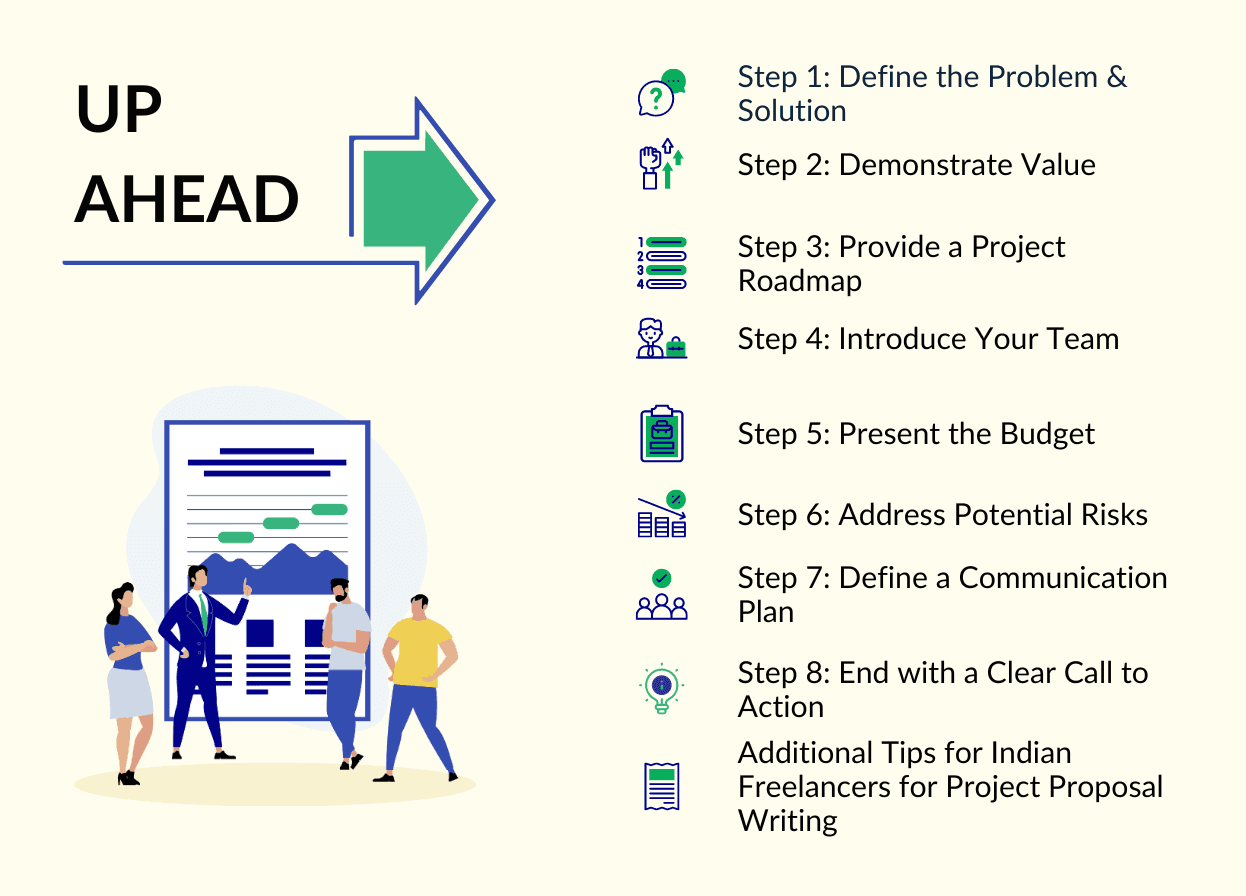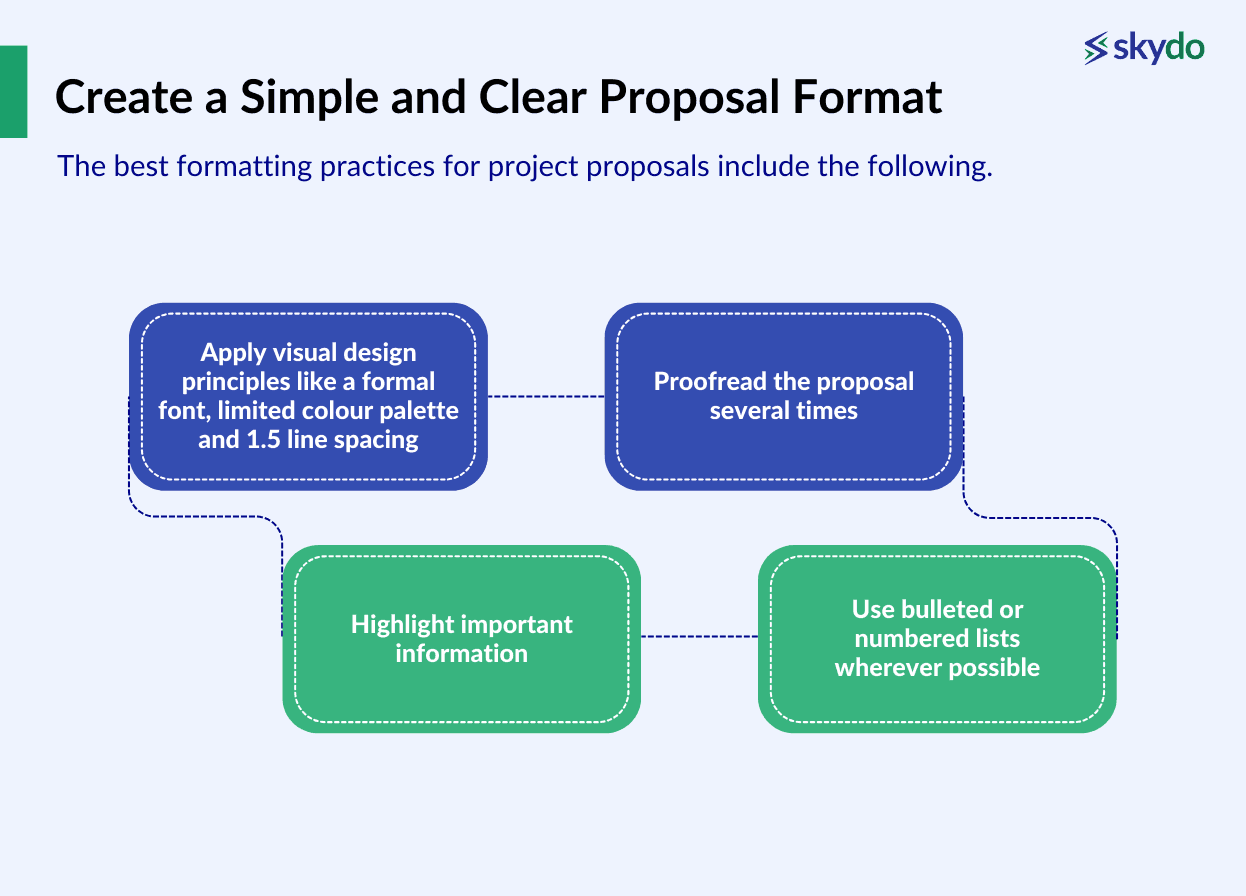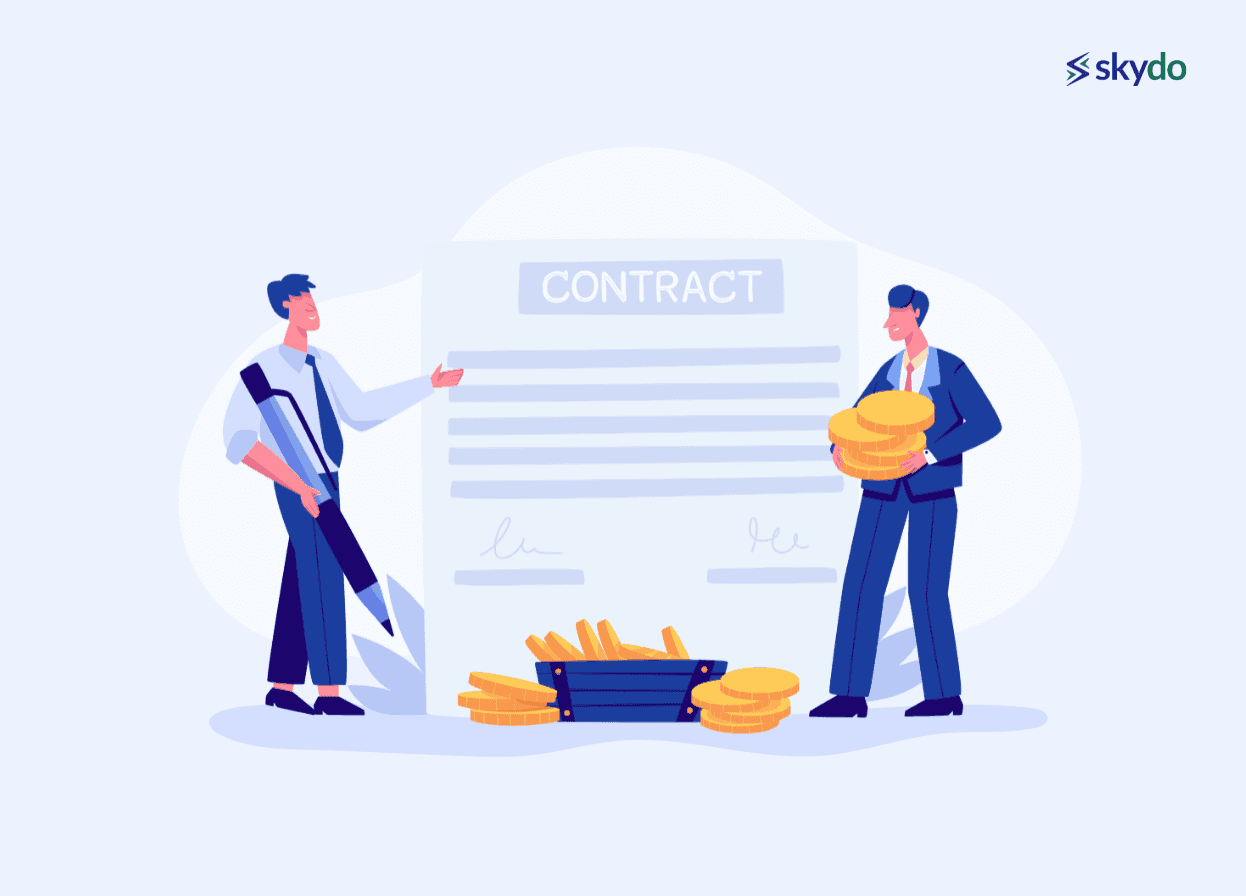8 Steps to Craft a Winning Freelance Project Proposal


“A good project proposal shows how you think”, says Avani Miriyala in the 6-Figure Freelancer podcast. But why is that important?
“Demonstrating how you think helps the potential client understand that you have understood their problem well and can solve it for them. A clear proposal helps them visualise the project plan, and determine whether you will be the right fit”, explains Miriyala. Therefore, you need to lay out an actionable plan to grab their attention.
This blog provides a step-by-step process for how to write a project proposal to secure well-paying freelance opportunities.
Step 1: Define the Problem & Solution
1. Define a clear problem statement
Analyse the prospective client's current position and specify what's holding them back from achieving their goals. For example, “Despite high website traffic, the customer conversion rate is low due to confusing navigation and lack of clear call-to-action (CTA).”
2. Offer an effective solution
This is the section where you showcase your expertise. Here is an example of a crisp solution statement:
“Redesign the website and divide the tabs into clear categories and strategically place clear CTAs.”
The key here is to offer a customised solution and use data to make it more effective. For example, in the above solution, you can add how you will use Google Analytics to understand user behaviour and the points where they leave the website.
Step 2: Demonstrate Value
1. Quantify the benefits
Add potential output data to create more impact. For example, add that the lead conversion rate will increase by XYZ% in 6 months.
It is best to add visuals such as charts and graphs to add more impact.
2. Evidence & Impact
To create an impact, “Mention your strongest attribute up front”, says Stuart Crawford, the Managing Partner at Inkbot Design.
Add your unique selling points (USPs) by showing snippets of results generated for other similar projects.
Also include testimonials or case studies to highlight your expertise.
Step 3: Provide a Project Roadmap
1. Phased Approach
Create an overview of a project roadmap to demonstrate your expertise. Add visuals such as a Gantt chart or a flowchart to show the step-by-step process to achieve the goals.
2. Mention Milestones
Go a step ahead and add milestones for each project phase. This requires mentioning the overall strategy or actionable steps to achieving those milestones.
Explain how each phase contributes to the overall goal and the Key Performance Indicators (KPIs) to measure progress.
Step 4: Introduce Your Team
1. Show Expertise & Experience
Provide your team's details to build trust and add a personal touch. Add the expertise and experience of members for that particular project.
2. Collaborative Strength
Explain the team dynamics briefly by mentioning how they collaborate. This gives reassurance to the client that the project will be carried out smoothly and efficiently.
Step 5: Present the Budget
1. Share a Detailed Budget
Proposing a budget at the initial stage saves time and effort spent in negotiations after the project gets started.
Presenting options makes it easier for the client to choose and understand the value they will get.
2. Provide a Budget Breakdown
Provide a clear breakdown of all expected costs of each tool or resource and the budget for different project phases.
Step 6: Address Potential Risks
1. Identify Potential Challenges
You must inform the client about the potential challenges that might impact the project outlook. It helps set realistic expectations and shows transparency.
Here are some challenges you can specify:

- Change in scope of the project leading to an increase in budget and delayed delivery
- Technical issues such as the inability to integrate tools into the client's IT infrastructure
- Loss of access to resources
- Delay caused due to dependency on third-party providers or vendors
- Sudden changes in market conditions
2. Provide Mitigation Strategies
The strategies can include clear and consistent project documentation to ensure transparency, defining deliverables and developing contingency plans.
It shows your problem-solving approach, thus increasing your chances of getting hired.
Step 7: Define a Communication Plan
1. Emphasise Open Communication
Demonstrate your commitment to maintaining open communication for feedback and problem-solving throughout the project through transparent project reporting and constructive feedback.
2. Define Your Communication Plan
Suggest a project management tool you and the client can use to collaborate and track project status.
Also add other channels of communication such as email, WhatsApp or calls. Moreover, you can suggest scheduling periodic meetings once a week or biweekly to discuss task updates or queries.
Step 8: End with a Clear Call to Action
1. Add a Compelling CTA
Add a statement prompting the client to take action at the end of the project proposal such as “Boost your lead conversion rate.”
2. Mention the Next Steps
This involves adding how the client can reach out to you if they like the proposal. Mention your contact details and LinkedIn profile. You can also add a line asking them to call you in case of any queries.
Additional Tips for Indian Freelancers for Project Proposal Writing
1. Personalise Your Proposal
Customise the freelance project proposal template for each client based on the project requirements. It shows attention to detail and boosts credibility.
2. Highlight Unique Selling Points
Create a small section in the project proposal with some brief pointers highlighting your USPs and what sets you apart from other freelancers.
Some USPs you can add are:

- Open communication
- Proven track record in generating desired outputs
- Industry know-how
- Value-added services like free consultation or follow-up support.
3. Ensure a Simple and Clear Proposal Format
The best formatting practices for project proposals include:

- Applying visual design principles like a formal font, limited colour palette and 1.5 line spacing
- Proofread the proposal several times
- Highlight important information
- Use bulleted or numbered lists wherever possible
4. Send Follow-Up Emails
You can use email tracking tools to check when the client has opened your proposal. If you don't receive a reply within 2-3 days, send a follow-up email.
The email should express gratitude for going through the proposal and ask them if they have any concerns or queries. Here is a template you can use:

Conclusion
Growing your freelancing business also involves automating processes to improve efficiency. This is where Skydo, a modern payment solution, helps. It automates invoice generation, payment reminders and FIRA generation, thus helping you boost productivity.
Sign up on Skydo today to streamline freelance payment processes and improve work efficiency.
Q1. What is proposal writing?
Ans. Project proposal writing is creating a formal document that freelancers use to pitch their services to a prospective client. Its purpose is to showcase your skills and expertise and convince the client to work with you.
Q2. How to write a proposal for a project?
Q3. What is the best title for a project proposal?












